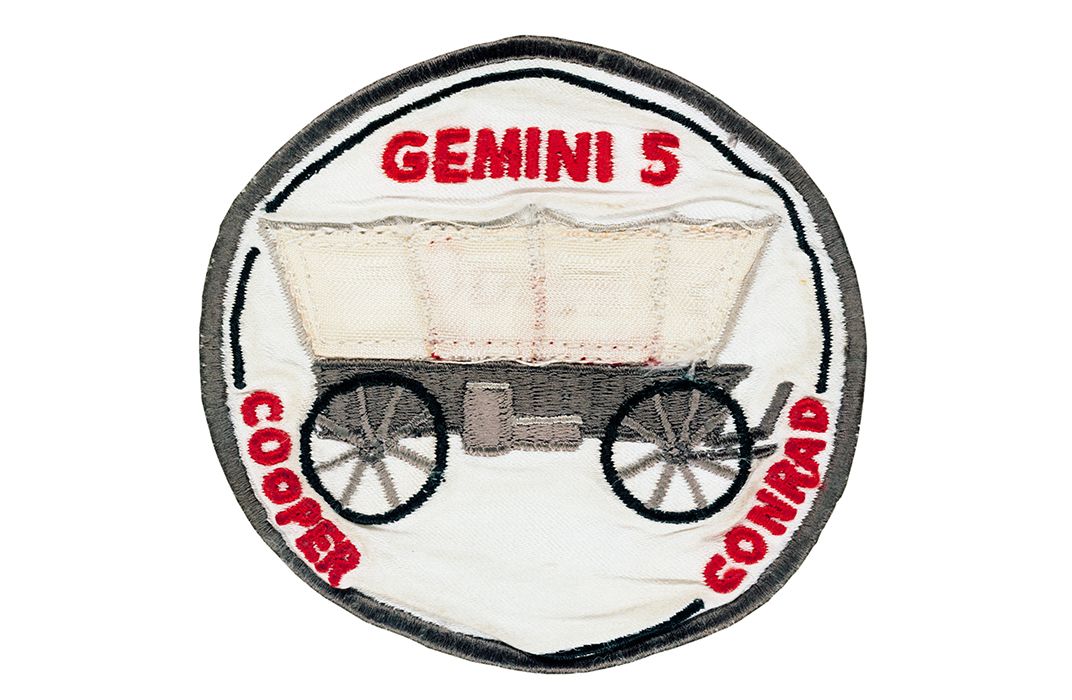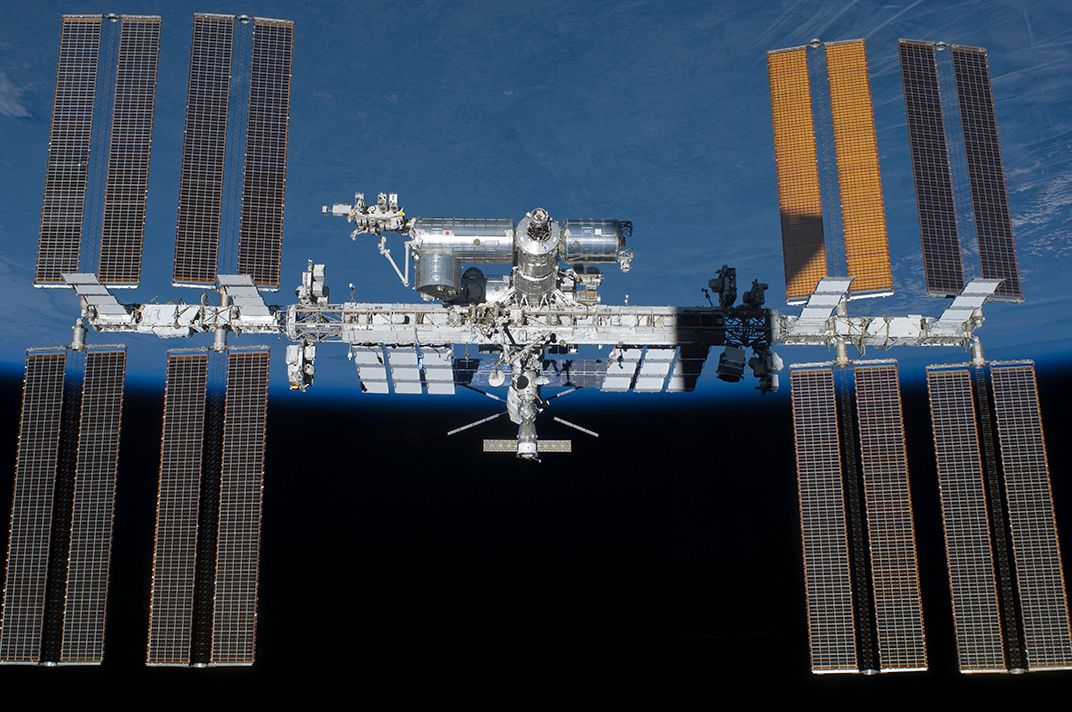Q: What Fighter Pilot Used Gum on His Windscreen as a Gunsight?
The answer* is in a new Air & Space trivia book, guaranteed to win your bar bets.
/https://tf-cmsv2-smithsonianmag-media.s3.amazonaws.com/filer/74/ba/74ba9584-9095-42c3-9306-c971a7ebb65c/02-air-space-trivia-nieuport.jpg)
There’s one in every crowd. You know who we’re talking about: the know-it-all parading his knowledge of the most arcane facts. Who was the first person to dine in space? What American helicopter was the first to enter military service? When was the first model missile kit released for sale? Well, get ready to trump this annoying person with just one book: The Smithsonian Book of Air & Space Trivia, edited by Amy Pastan (Smithsonian Books, 2014). Nearly 300 questions—many accompanied by photographs of artifacts from the National Air and Space Museum—cover everything from aerospace pioneers to technological feats to controversies and calamities. So go ahead: Make that wager. We bet you’ll win. (*Answer: Frances “Gabby” Gabreski. The veteran flier, unfamiliar with the F-86’s controls, replaced the radar-controlled gunsight with a wad of chewing gum.)
What World War I airplane was the first fighter with an American unit to score an aerial victory?
The Nieuport 28. On April 14, 1918, Lieutenants Alan Winslow and Douglas Campbell of the 94th Aero Squadron, both piloting Nieuport 28s, each downed an enemy aircraft in a fight directly over their home airfield at Gengoult Aerodrome, near Toul, France.
How long was the first helicopter flight?
About 20 seconds. Frenchman Paul Cornu (1881–1944) is credited with being the first to get a helicopter into the air. Cornu’s craft looked like little more than a bicycle. In fact, its 24-horsepower engine drove a belt that enabled two horizontal bicycle wheels with paddle attachments to spin.
Who was the first American flier to loop the loop?
Lincoln Beachey. One of the most famous stunt pilots before World War I, Beachey (1887–1915) was hired in 1911 as a pilot to promote the Curtiss company’s airplanes.
What stunt plane was most often used for wingwalking in the 1920s?
The Curtiss JN-4D Jenny. At the end of World War I, the U.S. government began to sell off its surplus Jennys, the primary trainer for pilots. This made Jennys available to civilian pilots, many of whom became barnstormers in the 1920s. The slow-flying Jenny was perfect for wingwalkers, who hung onto the struts while performing daring feats.
What bomber was used in every theater of World War II?
The North American B-25 Mitchell. A highly versatile airplane, the B-25 could carry more than 3,000 pounds of ordnance and was an effective attack aircraft.
How many astronauts have walked on the moon?
Twelve.
What airline started as a cropdusting service known as the Huff-Daland Duster Company?
Delta Air Lines. Huff-Daland Duster was founded in Georgia in 1924 as the first commercial agricultural flying company. In 1928, C. Woolman, the founder of Delta, took over the company from financially distressed Huff-Daland and changed its name to Delta Air Service, as its route covered the Mississippi Delta region.
What was the first space mission to have a mission patch?
Gemini 5. The crew wanted to put their stamp on their mission, so they created a patch with a Conestoga wagon to symbolize pioneering spirit and added the slogan “8 days or bust.” NASA covered the slogan with a piece of nylon cloth but left the wagon.
When was a movie first shown on a commercial flight?
On April 6, 1925. A British carrier, Imperial Airways, showed The Lost World, a short adaptation of Arthur Conan Doyle’s novel of the same title. The orchestral music that normally accompanied silent films was piped into the cabin via radio, though with the noisy engines of the era, the music must have been played at exceedingly high volume to compete.
The title of the movie October Sky is an anagram for what book by NASA engineer Homer Hickam?
Rocket Boys. What started out as a short article about his boyhood for Air & Space/Smithsonian magazine in 1995 was so popular that NASA scientist and engineer Homer Hickam turned it into a memoir called Rocket Boys. The book was made into a heartwarming movie called October Sky in 1999.
What was the first exclusively airborne invasion?
The German invasion of Crete, in May 1941. During World War II, the Luftwaffe experimented with using aircraft to deliver troops into battle by either parachute or glider. The first exclusively airborne invasion was made when the Germans used an initial wave of paratroopers to secure the airfield on the Mediterranean island of Crete, thereby allowing their transport vehicles to deliver heavy equipment and reinforcements.
What kind of airplane attacked King Kong at the top of the Empire State Building in the 1933 movie King Kong?
A Curtiss F8C Helldiver. For the famous shot, the airplanes were filmed taking off and landing at an airfield on Long Island. Background views of New York from the Empire State Building were filmed separately.
What type of sandwich did astronaut John Young smuggle into his spacesuit on Gemini 3?
Corned beef. NASA was not amused.
Who was the first British astronaut?
Helen Sharman. In 1991 Sharman boarded the Soyuz TM-12 space capsule and became the first Briton in space. Sharman was a chemist with Mars Food UK in 1989 when she heard an ad on the radio for astronauts. She was selected from more than 13,000 applicants to be the British member of the Russian scientific space mission Project Juno.
What type of helicopter is seen during the opening credits of the TV show “M*A*S*H”?
A Bell H-13 Sioux (Bell 47). The producers of “M*A*S*H,” the long-running TV comedy about doctors and nurses in the 4077th Mobile Army Surgical Hospital during the Korean War, took great pains to get the details correct. For the opening credits of the series, which shows wounded soldiers being airlifted to the M*A*S*H unit, they used a vintage Sioux helicopter, the type actually deployed as an air ambulance in Korea.
What is the heaviest conventional bomb ever dropped by an airplane?
On March 5, 1948, at Muroc Air Force Base, California, a B-29 Superfortress dropped a bomb weighing 22 tons. Variously known as the T-12 Cloudmaker, or earthquake bomb, it weighed twice as much as the largest bomb dropped in World War II.
What manufacturer of English luxury cars was killed while landing a Wright biplane?
Charles Rolls of Rolls-Royce. The English car manufacturer was killed in July 1910 when his Wright biplane, coming in for a landing, broke up—perhaps as a result of a faulty tail piece recently added to the aircraft and not part of the original Wright design. Before his death, Rolls had tried to persuade his business partner, Henry Royce, to enter the aviation business, but Royce preferred to focus on automobiles. During World War I, Royce reversed his position and began to manufacture airplane engines.
What World War II bomber was named Flak-Bait and flew more missions than any other American aircraft?
A Martin B-26B-25-MA Marauder. Lieutenant James J. Farrell flew more missions in Flak-Bait than any other pilot. He named the bomber after Flea Bait, his family’s dog.
What piloted aircraft is considered the fastest ever to fly?
The North American X-15. Three X-15s were made, and the first was flown in 1959. The X-15s exceeded four, five, and six times the speed of sound. One achieved 4,534 mph—Mach 6.72. Another flew through the outer reaches of the atmosphere.


